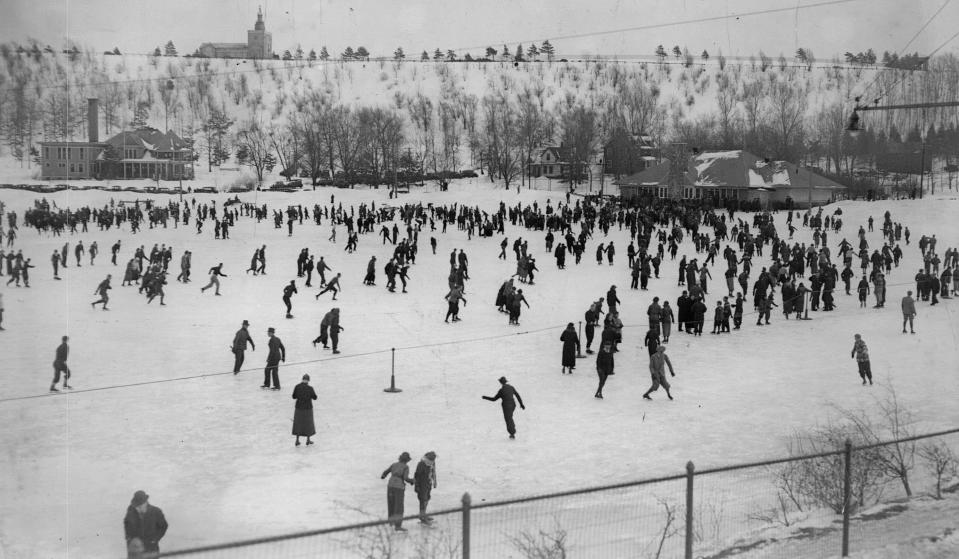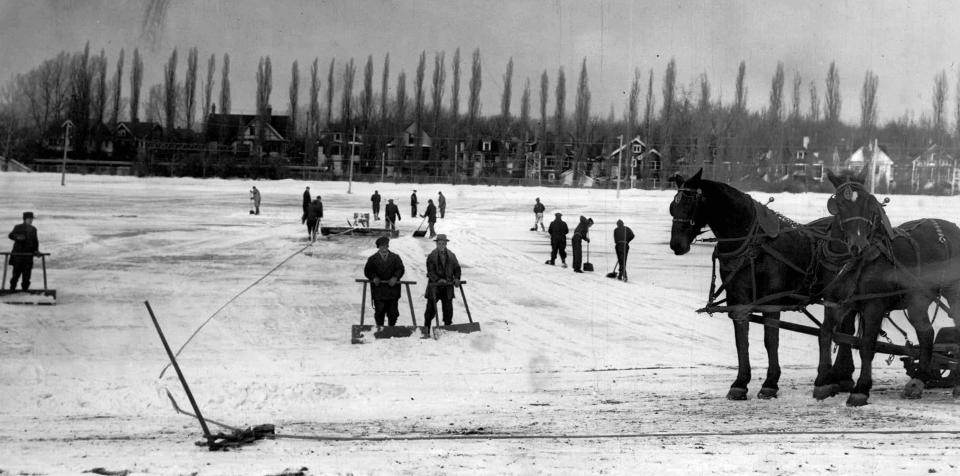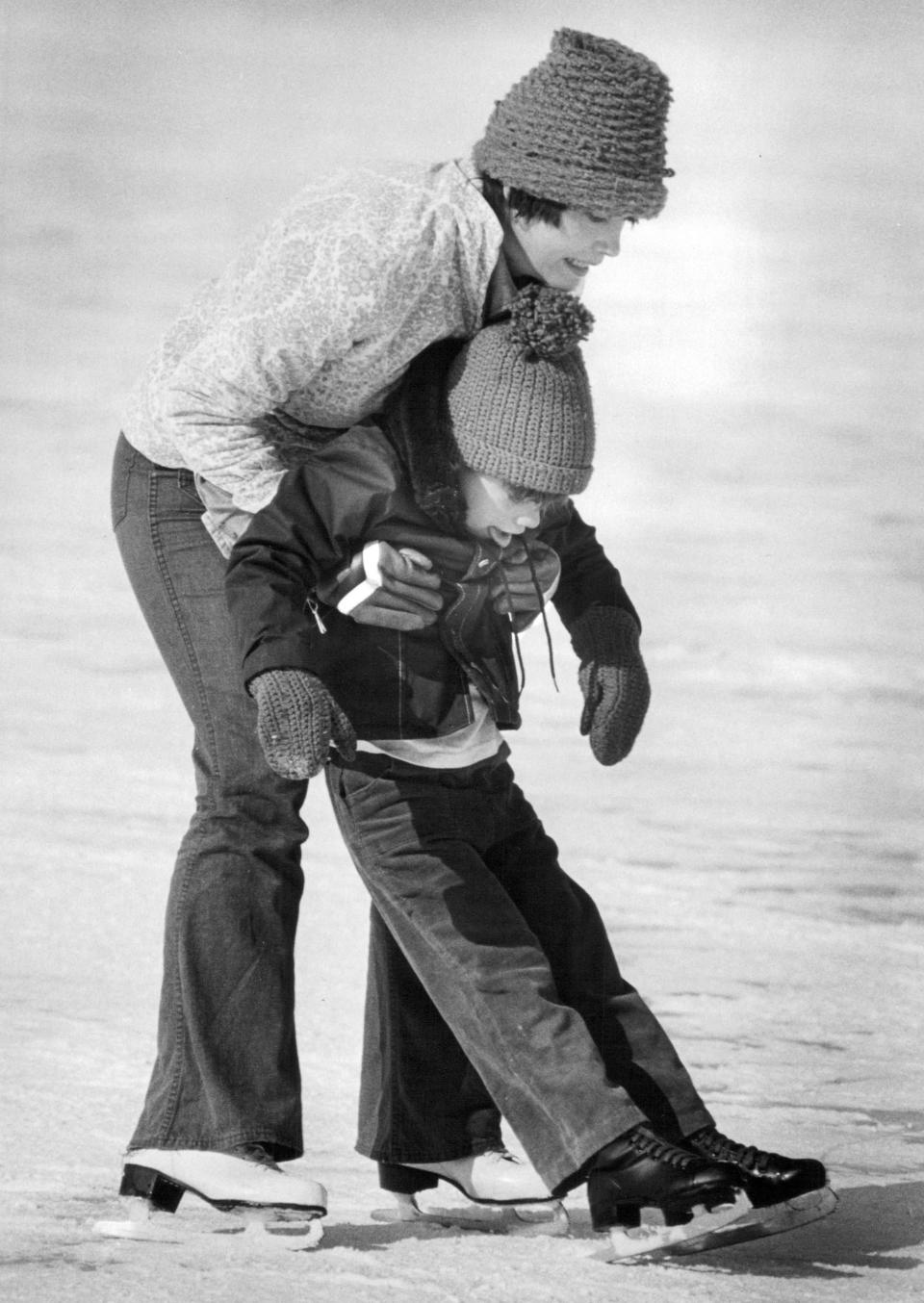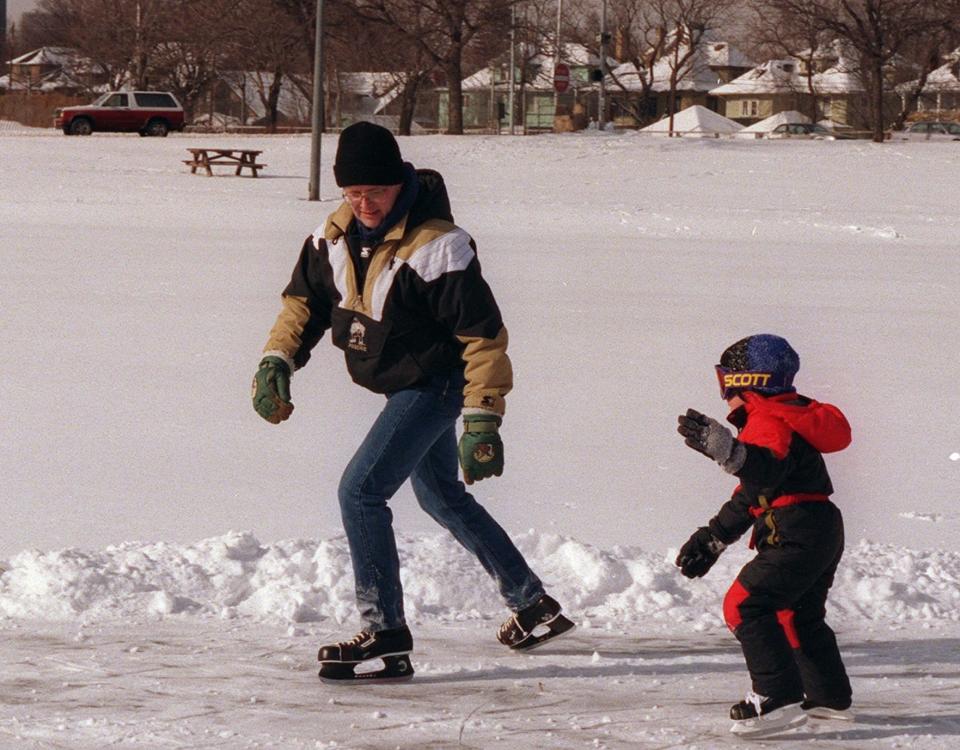People loved skating in Cobbs Hills Park in Rochester. Why it's been gone for 30+ years
Cobbs Hill Park provided a winter wonderland for ice skaters in Rochester for much of the 20th century as home to one of two natural rinks the city maintained.
Skaters by the hundreds simultaneously cascaded across the frozen Lake Riley — actually, a pond — and before that, an area called the Eastern Widewaters. The city's other natural rink, at Maplewood Park, was much smaller than at Cobbs Hill, which first hosted citywide skating championships around the time World War I started.
The city began operating artificial rinks for skating in the 1950s, as it still does today. By the 1980s, indoor rinks became all the rage. To purists, though, there's no comparison to the way skating used to be at Cobbs Hill — outdoors and on a frozen natural body of water.
Patti Singer wrote of the appeal in a 1994 Democrat and Chronicle story, after Lake Riley had already been closed to skaters.

"The biggest difference between skating at an indoor rink and on a pond is the difference between driving the expressway at rush hour and traveling a country road," Singer wrote. "Skating outdoors provides the luxury of enjoying the surroundings — the color of the sky, how clean everything smells. The noise of children is muffled by the snow; skating alone, the silence can be so loud."
At the time, as now, the city operated an outdoor ice skating rink at Manhattan Square Park (since renamed Martin Luther King Jr. Memorial Park). But that "doesn't count as natural ice," Singer wrote, "because compressors offer nature a helping hand."
Cobbs Hill became a city park in 1908, when the body of water there was much larger than it is today. The original Erie Canal skirted the north edge of the park before the abandoned canal became Rochester's subway and then later an expressway, as Bob Marcotte wrote in a 2003 Democrat and Chronicle story.

"Part of the canal's waters spread over the broad, flat area just north of Cobbs Hill," Marcotte wrote. "The area was known as the Eastern Widewaters. Ice skaters have thronged its frozen surface for years."
The Widewaters were the first place east of downtown where canal barges could turn around. The vast expanse, when frozen in winter, was an ideal place for skating. Later named Lake Riley (after a city parks commissioner), the size was vastly reduced in the late 1950s with fill dirt from the old subway bed when the "Eastern Expressway" (now Interstate 490) was being built. That decision caused some consternation, as evidenced by a 1958 letter to the editor.
"Many, many times in the past, Riley Lake (sic) has been so crowded with skaters that one was actually cramped for space to skate," the writer noted. "Now, with its size nearly cut in half, will skating be better or worse?"

There had been a lot of history at those wide waters. A 1955 news story promoted the 42nd annual city of Rochester ice-skating championships at Cobbs Hill Park. A senior Olympic speed-skating champion from Hamlin told in a 1989 Times-Union story how he started skating at Cobbs Hill as a child.
"After the Depression, there were no inside rinks, so we were dependent on outside ice," said the skater, Eugene Czerkas. "I had a grand, glorious time in those days."
The city operated oodles of ice rinks over the ensuing years, at places like Carter Park, the Webster Avenue Recreation Center, Norton Village, the Danforth Recreation Center, the Edgerton Recreation Center, Manhattan Square Park and more. Genesee Valley Park has had several incarnations, including a covered rink that opened in 1987. All except Genesee Valley and Martin Luther King Jr. Memorial are now closed. The natural rinks at Cobbs Hill and at Maplewood met that fate in 1991.

Jim Farr, director of the Rochester Public Market and a longtime assistant director of parks and recreation, said the city closed Lake Riley and Maplewood to skating for a variety of reasons. Budget cuts led to staffing cuts, he said, and maintaining the natural ponds became too cost-prohibitive. New indoor rinks, like Thomas Creek in Penfield, which opened in 1989, became more popular options for skaters.
Natural rinks needed at least 51/2 inches of ice for safe skating, Farr said. Too often, that didn't materialize.
"It's not just waiting for the 51/2 inches of ice to form," he said. "You have to remove the leaves from the water. You have to get the snow removed from the surface. There were some winters … when it was not so cold that we would only get 15 days of skating each winter. That's a lot of effort for 15 days."
Skaters can still find places to skate on frozen ponds in Monroe County, but not like they did at Cobbs Hill.
Morrell is a Rochester-based freelance writer. This story was published in February 2019 as part of the Whatever Happened To series.
This article originally appeared on Rochester Democrat and Chronicle: Cobbs Hill Park in Rochester ny was hugely popular for ice skating

